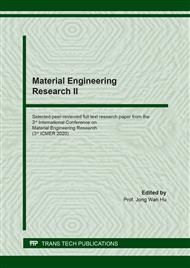p.1
p.7
p.13
p.19
p.25
p.33
p.39
p.47
A Combination of Dracaena fragrans and Trichoderma fungus in Removing Heavy Metals Contamination from Agricultural Soils
Abstract:
Environmental pollution due to heavy metals is a matter of great concern to many scientists and managers worldwide. The threats to human health from heavy metals are primarily associated with the exposure in agriculture production activities. However, a considerable number of technological methods have been used to remove the heavy metals from polluted soils. One of the simplest measures to effectively remove heavy metal contamination is to use both plants and microorganisms, which have been considered "natural materials" or "Bio-Materials" to treat pollutants. This study was conducted on assessing the ability of Trichoderma to absorb heavy metals into the plant. Phytoremediation experiments with Trichoderma were used to remove heavy metals in the soil. Our findings showed that Dracaena Fragrans plants are capable of absorbing heavy metals Cu, Pb, and Zn in soil contaminated with experimental heavy metals.
Info:
Periodical:
Pages:
19-24
Citation:
Online since:
January 2021
Authors:
Keywords:
Price:
Сopyright:
© 2021 Trans Tech Publications Ltd. All Rights Reserved
Share:
Citation:


